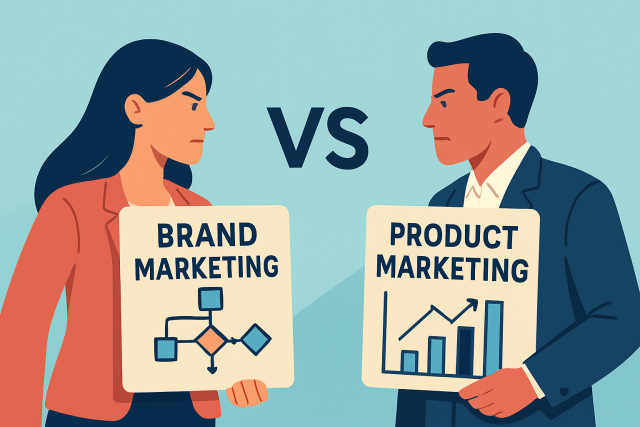
How to Simplify Branded Content Management
Managing branded content can be complex. This guide breaks down practical steps to simplify workflow...

A solid content marketing strategy framework is essential for businesses eager to make their mark in today’s crowded digital landscape. Think of it as your roadmap that helps marketers steer a clear course connecting big-picture business goals with the content actions that drive engagement and build trust and deliver results you can track. This in-depth guide covers foundational ideas and must-have elements plus hands-on tips. It equips you with the know-how to create, roll out and fine-tune a content marketing strategy framework that truly gets the job done.
A content marketing strategy framework is like a trusty blueprint that brings all your content efforts together to support your business goals. It’s much more than a simple plan. Think of it as a flexible system that manages everything from setting clear goals and truly understanding your audience to handling creation workflows and analyzing the results.
Using a clear content marketing strategy framework helps bring focus and consistency to your campaigns. It makes it easier for everyone involved to pull in the same direction and supports growth as your content efforts expand. It also keeps your marketing activities aligned with your business goals.
“A carefully crafted content marketing strategy framework takes what might seem like scattered efforts and weaves them into a well-oiled growth engine, helping marketers steadily boost and broaden their impact over time. – Jamie Reynolds, Content Marketing Strategist
Setting clear and measurable objectives that truly align with your business goals lays the essential groundwork for your content strategy.
Clearly nail down your main business goals to ensure everyone is aligned.
Break these big-picture goals into specific marketing targets your content can influence.
Craft SMART (Specific, Measurable, Achievable, Relevant, Time-bound) objectives to keep your efforts on track.
Identify key performance indicators like website traffic, engagement or leads generated. These are your trusty compass.
Share these goals and KPIs openly with your marketing and content teams so everyone stays locked in and moves forward together.
Getting to know your audience inside and out is where the magic truly begins. Building personas isn’t just a box to check; it’s about painting a vivid picture of who you’re speaking to, down to the quirks and preferences that make them tick. In my experience, the more you dig, the better your message lands—no surprise there, right? So roll up your sleeves and dive deep, because this step can make all the difference between a dud and a wow.
Getting to know your audience inside and out makes all the difference when it comes to crafting content that genuinely clicks and keeps them hooked while nudging them toward action.
Effective content ideation usually kicks off with brainstorming topics that genuinely resonate with the audience's needs while backing up business goals. Wrangling these ideas around the buyer's journey gives you a clear roadmap to follow. Then, leaning on an editorial calendar keeps your publishing rhythm steady and sharp.
| Date | Topic | Content Type | Target Persona | Goal | Distribution Channel | Status |
|---|---|---|---|---|---|---|
| 2024-07-01 | Building Buyer Personas | Blog Post | Marketing Managers | Raise Awareness | Website, LinkedIn | Scheduled |
| 2024-07-05 | SEO Tips for Beginners | Video | Small Business Owners | Boost Engagement | YouTube, Email | In Progress |
| 2024-07-10 | Measuring Content Marketing ROI | Webinar | CMOs | Generate Leads | Email, LinkedIn | Planned |
When it comes to crafting and producing content, there’s a real art to balancing creativity with strategy. It’s not just about throwing words on a page or piecing together videos; it’s about telling a story that sticks. You might find yourself juggling a handful of ideas, tweaking until everything clicks, and yes, sometimes wrestling with the infamous writer’s block or the endless rounds of edits. But trust me, the payoff when your content finally resonates with an audience is well worth the sweat. Plus, a little trial and error sprinkled with some good old-fashioned inspiration often leads to the most memorable pieces. So roll up your sleeves and dive in—content creation is as much about patience and passion as it is about polish.
Creating high-quality engaging content that truly connects with your audience and ticks all the boxes for search engines is at the heart of your strategy. Whether it’s blogs, videos or infographics, your content should reflect your brand’s unique voice and genuinely tackle what your users want.

Content marketing team working together on producing diverse content formats.
Choosing the right channels for your content is a big deal when it comes to boosting reach and engagement. I’ve found that mixing organic and paid strategies usually does the trick, helping you connect with the right crowd.
Alright, let’s dive into the nitty-gritty of measurement and analytics. It might not sound like the most thrilling topic at first, but trust me, getting this part right can make all the difference. After all, how else are you going to tell if your efforts are actually paying off or if you’re just throwing spaghetti at the wall? This section walks you through the essentials of tracking, analyzing, and making sense of the data so you can fine-tune your strategies like a pro.
Use analytics tools to keep a close eye on those key content performance metrics.
| Metric | Definition | Ideal Use Case | Tools to Track |
|---|---|---|---|
| Organic Traffic | Count of visitors arriving from unpaid search results – think of it as foot traffic without the ads | Gauge how well your SEO content is pulling its weight | Google Analytics, Moz Pro |
| Engagement Rate | Level of interactions like likes, shares, and comments that show your audience is actually paying attention | Get a feel for how hooked your audience really is | Social media insights, Google Analytics |
| Conversion Rate | Portion of visitors who take the bait and complete a desired action | Keep an eye on how well your lead gen or sales strategies are doing | Google Analytics, CRM systems |
| Bounce Rate | Percentage of visitors who make a quick exit after just one page | Spot those areas where your content might be missing the mark | Google Analytics |
| Keyword Rankings | Where your important keywords stand in the search engine pecking order | Stay on top of your SEO game | Moz Pro, Mangools |
Continuous optimization is the secret sauce that keeps your content fresh and spot-on as audience tastes and market trends change. By regularly checking performance and experimenting with different versions and genuinely listening to feedback, you’re setting yourself up for a better return on investment.
Make it a habit to regularly peek at your content and catch anything that feels outdated or just isn’t clicking.
Gather user feedback through surveys or direct comments because there’s gold to be found when you listen.
Don’t be shy about running A/B tests on headlines, formats and calls to action. It’s a great way to figure out what truly resonates.
Keep an eye on your analytics to spot shifting trends or fresh opportunities that might be hiding in plain sight.
Use what you discover to tweak your content strategy and be sure to keep your team well informed because nobody likes surprises in the middle of a project.
Putting the framework to work in real-world situations calls for thoughtful planning and open, honest chats with stakeholders. You also need to make sure resources are lined up just right.
Take a good hard look at your existing content and marketing materials and try to spot any gaps lurking under the surface.
Set crystal-clear business and marketing goals that will help you steer your strategy in the right direction.
Roll up your sleeves and dive deep into your audience research because crafting detailed buyer personas can make all the difference.
Plan your content topics thoughtfully and map a publishing schedule that aligns with what you have uncovered.
Create your content following best practices to keep quality high and ensure your SEO game is on point.
Share your content across the right channels while striking a smart balance between organic reach and paid strategies.
Regularly keep an eye on your content’s performance using trusty analytics tools like Moz Pro or Mangools since those insights can be gold.
Keep tweaking and refining your strategy by leaning into data insights and do not forget to listen to what your audience is telling you.
Many marketers struggle to keep a steady rhythm and juggle teamwork seamlessly. They must also pivot quickly when trends take a sudden turn. Getting past these bumps in the road usually calls for clear communication and leaning on technology to handle routine tasks and crunch data.
“Successful content marketing isn’t just about churning out more content; it’s really about working smarter, not harder. The biggest hurdle I’ve seen is getting everyone on the same page when it comes to goals and metrics. That’s where the magic happens—when you combine the right technology with solid leadership, things start to click.” – Alex Morgan, Digital Marketing Consultant
Many businesses clearly demonstrate that implementing a solid content marketing strategy framework can spark some pretty noticeable growth. Whether it's B2B SaaS companies ramping up customer acquisition or non-profits working hard to spread the word, thoughtful content planning tends to deliver measurable results across the board.
18 articles published
Transforming the field of Internet Marketing, Orion Chadwick weaves a tapestry of creativity, data-driven insights, and user psychology, captivating audiences with his visionary perspectives.
Read Pages
Managing branded content can be complex. This guide breaks down practical steps to simplify workflow...

Unlock the power of high-performance content to engage audiences, improve SEO, increase conversions,...

Explore the key differences between brand marketing and product marketing with an in-depth compariso...

Discover practical, step-by-step content marketing for events techniques that drive attendance, elev...